
Southern Nevada Wilderness Areas

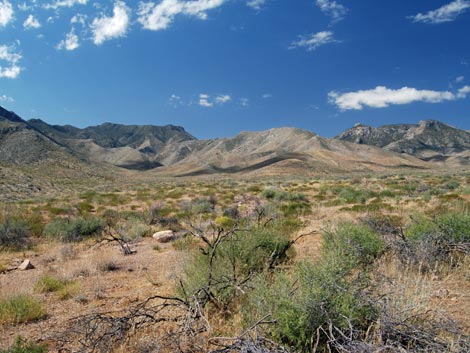 |
Overview Mormon Mountains is a large (157,700 acres) wilderness area on the northern edge of Clark County. Most of the wilderness area is located in Lincoln County. Mormon Mountain (the mountain) is a more-or-less circular sky-island standing alone (like a volcano) above the desert flats. The area has a history of human use with several dirt roads penetrating the wilderness areas, but it remains wild and rugged with high cliffs, deep canyons, towering peaks, and little modern human use. The mountain range supported a hidden forest of ponderosa pines near the summit, but it burned in 2005, and with climate change, it is unclear if the forest will ever grow back. If you hike in wilderness areas, help protect them by learning about and reporting noxious and invasive weeds. |
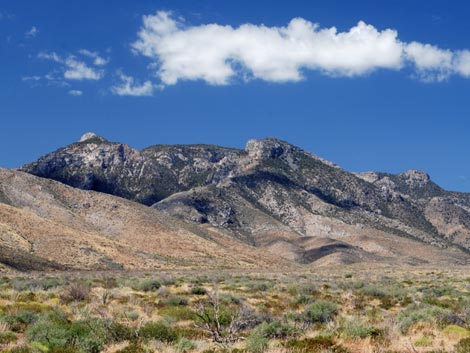 |
Location The Mormon Mountains Wilderness Area is located north of Interstate 15, about 65 air-miles northeast of Las Vegas, and just north of Glendale. Link to map of the Mormon Mountains Wilderness Area. Boundaries Mormon Mountain is an essentially an isolated, mountain peak that stands up from a more-or-less flat landscape. As such, the outline of the mountain range on a map is circular. Much of the wilderness boundary follows dirt roads the circle the mountain at about 3,000 feet in elevation. Meadow Valley Wash forms the northwest boundary. |
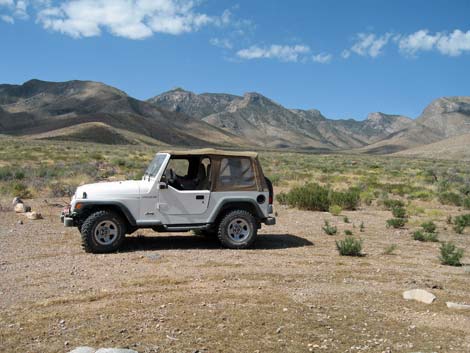 |
Access Access to the wilderness area is from roads that circle and penetrate the wilderness area. From Interstate-15, the road to Carp provides access to the east side of the wilderness area, and roads north from Glendale provide access to the western portion of the wilderness area. The Meadow Valley Wash Road provides access to the northwest side. Nine cherry-stem roads penetrate the wilderness area. |
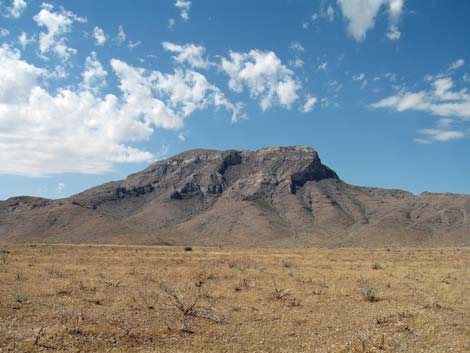 |
Terrain The Mormon Mountain Wilderness Area includes all of Mormon Mountain and the bajadas surrounding the mountain, plus an extension to the southwest to include the summit of Moapa Peak. As such, the terrain ranges from broad, flat bajadas to steep, rugged limestone mountain peaks cut by deep canyon and high cliffs. Elevations range from about 2,200 feet in the southwest to 7,414 ft at the summit of Mormon Mountain. |
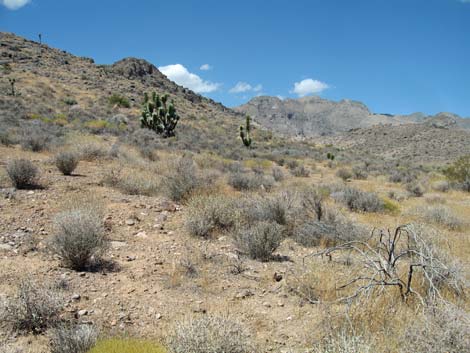 |
Habitat Type The habitat type over much of the wilderness area is typical of the Upper Sonoran (Mojave Desert Scrub) life zone where species such as Creosote Bush, White Bursage, Mojave Yucca, and Barrel Cactus are common. At higher elevations, Blackbrush and Joshua Trees are common. Honey Mesquite and Catclaw Acacia can be found in the larger washes, and the higher mountain ridges support pinyon-juniper woodlands. The highest elevations used to support a hidden forest of ponderosa pines on the north side of Moapa Peak, but it burned in 2005, and with climate change, it is unclear if the forest will ever grow back. |
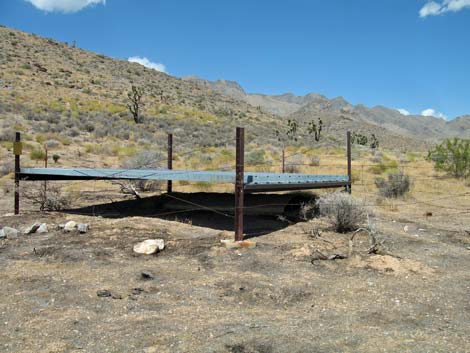 |
Wildlife Bighorn sheep are common in the Mormon Mountains, and desert tortoise occur at lower elevations. Several species of carnivores (including coyote, kit fox, ringtail cats, and bobcat) occur in the canyons. Small mammals include valley pocket gopher, kangaroo rats, and deer mice. Lizards in the area include side-blotched Lizards, banded geckos, and leopard lizards; snakes include sidewinders, speckled rattlesnakes, common kingsnakes, and long-nosed snakes. Birds are common, especially during migration when a variety of species can be found in Meadow Valley Wash. Golden Eagle, Great Horned Owl, Black-tailed Gnatcatchers, Say's Phoebe, White-crowned Sparrow, Gambel's Quail, Loggerhead Shrike, Rock Wren, Ruby-crowned Kinglet, and Common Ravens use the wilderness area. |
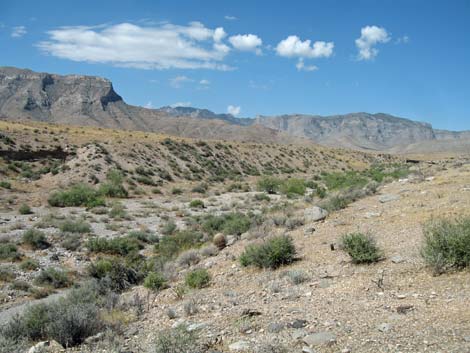 |
Archaeology The Mormon Mountains harbor many valuable archeological sites, including petroglyph and pictograph sites near prehistoric camp sites and caves, agave roasting pits, rock shelters, grinding stones, ceremonial circles, and other evidence of prehistoric use of the area. In historical times, miners and ranchers began using the area in the 1850s. Geology The mountains are predominantly limestone, which formed in shallow seas, and various fossils can be found in the rocks. In addition to Paleozoic carbonates (limestone and dolomite), small outcrops of Precambrian igneous and metamorphic are exposed on the west side of Mormon Peak. Gold was mined at the Whitmore Mine on the south side of the mountains. |
Note: All distances, elevations, and other facts are approximate.
![]() ; Last updated 240331
; Last updated 240331
| Wilderness Areas | Hiking | Guide Services | Glossary | Copyright, Conditions, Disclaimer | Home |